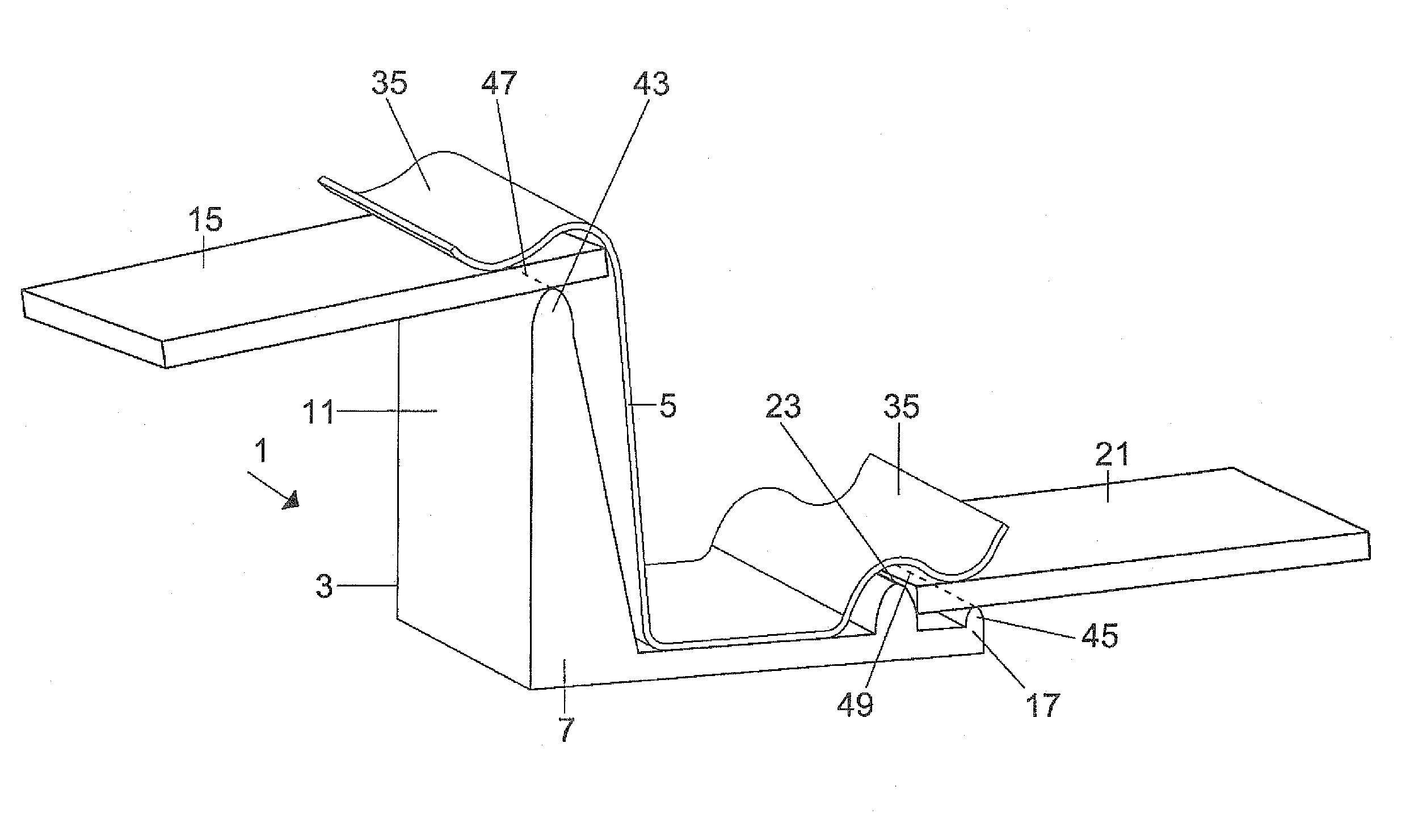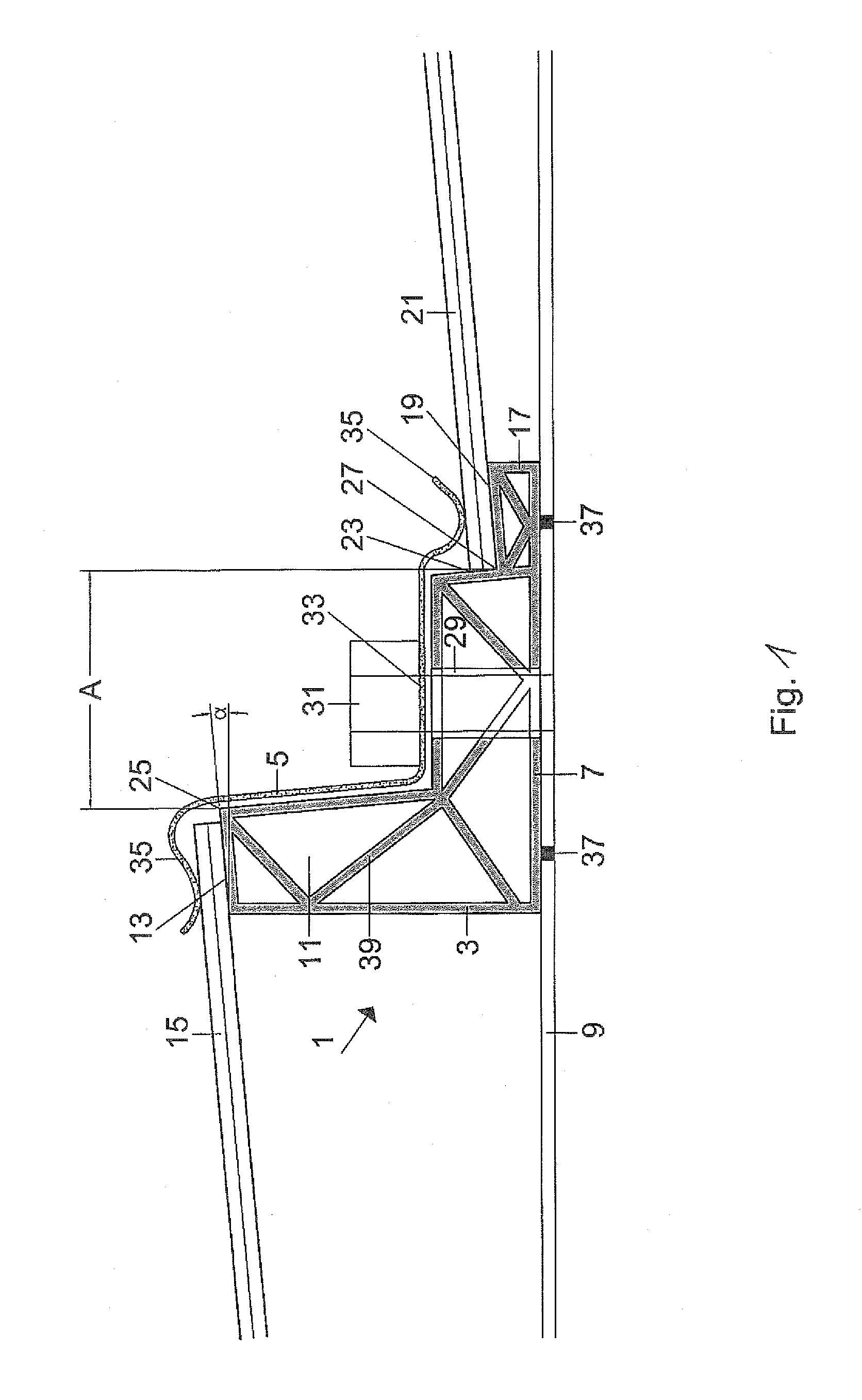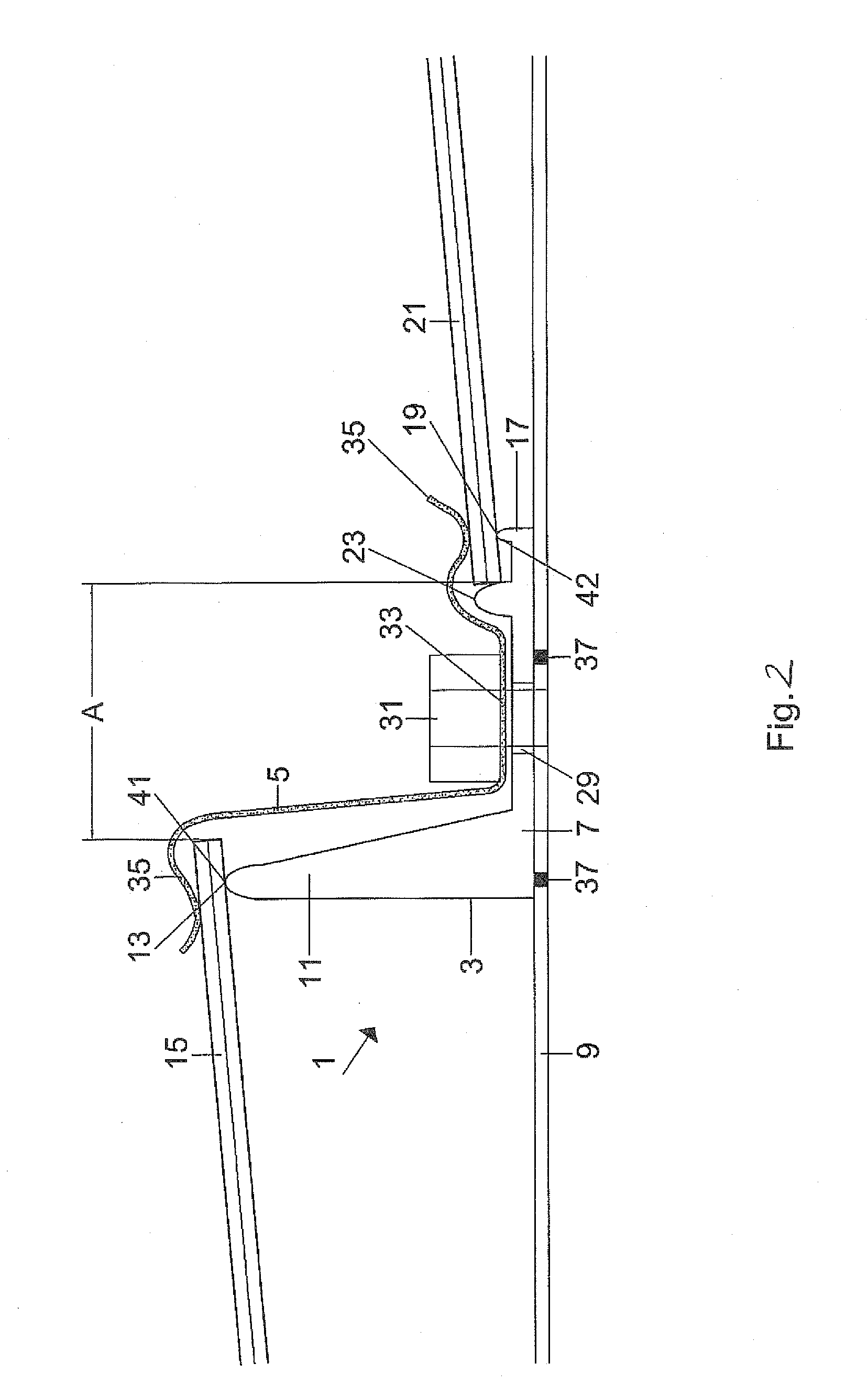Two-level clamp for photovoltaic modules
a photovoltaic module and clamping technology, applied in the field of clamping for inclined attachment of rectangular photovoltaic modules, can solve the problems of above-mentioned damage to the clamp, and achieve the effects of reducing the efficiency of the entire module, reducing friction coefficient, and highest electrical resistan
- Summary
- Abstract
- Description
- Claims
- Application Information
AI Technical Summary
Benefits of technology
Problems solved by technology
Method used
Image
Examples
Embodiment Construction
[0021]Throughout the Figures, same or corresponding elements are generally indicated by same reference numerals. These depicted embodiments are to be understood as illustrative of the invention and not as limiting in any way. It should also be understood that the drawings are not necessarily to scale and that the embodiments are sometimes illustrated by graphic symbols, phantom lines, diagrammatic representations and fragmentary views. In certain instances, details which are not necessary for an understanding of the present invention or which render other details difficult to perceive may have been omitted.
[0022]Turning now to FIG. 1, there is shown a clamp 1 includes a base 3 and a bracket 5. The base 3 has a flat bottom side 7 which is configured to rest flat on a module carrier, for example a module rail 9 or a module band (not shown). A tower-shaped raised portion 11 is located on the right side of the base plate with an upper end that is formed as a two-dimensional surface and ...
PUM
| Property | Measurement | Unit |
|---|---|---|
| Height | aaaaa | aaaaa |
| Height | aaaaa | aaaaa |
| Force | aaaaa | aaaaa |
Abstract
Description
Claims
Application Information
 Login to View More
Login to View More - R&D
- Intellectual Property
- Life Sciences
- Materials
- Tech Scout
- Unparalleled Data Quality
- Higher Quality Content
- 60% Fewer Hallucinations
Browse by: Latest US Patents, China's latest patents, Technical Efficacy Thesaurus, Application Domain, Technology Topic, Popular Technical Reports.
© 2025 PatSnap. All rights reserved.Legal|Privacy policy|Modern Slavery Act Transparency Statement|Sitemap|About US| Contact US: help@patsnap.com



